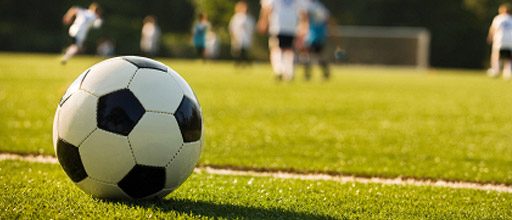
School sports hit teenage bodies hard
Researchers are calling for a high school sports injury prevention campaign, after new research that found unexpectedly high rates of musculoskeletal pain and injuries in children and teenagers.
The study found teenaged boys are far more likely than teenaged girls to visit GPs with sports injuries such as broken arms and sprained ankles.
The study, led by researchers from The George Institute for Global Health and The University of Sydney, found that boys and girls experience musculoskeletal pain and injuries at about the same rate – until they pass ten.
At that point, boys experienced a sharp increase.
Girls’ muscle and bone injury and pain rates also rose, but at a lower rate, until they turned 15, at which point rates decreased significantly.
The study estimates Australian children and teenagers visit their GPs for around 880,000 muscle and bone pain and injury treatments per year.
Senior author Dr Carolyn Broderick, of The George Institute and The Children’s Hospital Institute of Sports Medicine, said: “One explanation for the observed increase for boys in their teens is that this coincides with a critical period of growth and development in muscles and bones. It also coincides with a period of marked increases in height and weight which make contact and collision sports more injurious.
“Girls are more likely to drop out of sport in the adolescent years which might explain the decrease in musculoskeletal presentations in girls in this age-group.”
The study found that back pain and sport injuries accounted for most GP visits for musculoskeletal problems.
Dr Broderick and her colleagues want to see sports injury prevention strategies implemented at a community level. “While the benefits of physical activity in childhood are well-known, Children who frequently exercise or participate in organised sport have an increased risk of injury. It’s imperative they are taught how to play sport safely, so they don’t drop out. Exercise is so important in preventing obesity and related diseases such as diabetes and heart disease.”
It is estimated that eight per cent of teenagers drop out of sport annually because of injury, Dr Broderick said.
“Other studies have suggested that up to 40 per cent of children still had problems four years later, and that musculoskeletal conditions in childhood may increase the risk of further conditions in adulthood.”
She said other important findings included evidence of back pain in children who were just starting school.
“It’s quite significant that back pain is a real problem for children from as young as five, as the general view is that children only experience back pain if they are suffering from something serious, such as cancer. That’s obviously not true.”
The study’s findings of high levels of musculoskeletal pain and injuries among children and adolescents indicated that effective prevention and appropriate management of musculoskeletal pain and injury in Australia’s population could be of most benefit started early through GPs, Dr Broderick said.
The study, published in BioMed Central (BMC) was an analysis of data from the Bettering the Evaluation and Care of Health (BEACH) study – an ongoing study of GP activity that draws information from 100 consecutive patient visits to 1,000 randomly selected GPs each year.
The following may help children avoid sports injuries:
- Implementation of modified rules in junior sports
- Protective equipment including equipment which stabilises joints (for example, ankle taping or bracing for sports with high risk of ankle sprains) and that which disperses force (shin pads for soccer/hockey etc, helmets for skiing and cycling).
- Monitor and modify training loads at skeletally vulnerable times, such as during the adolescent growth spurt. Better to focus on skills training rather than excessive loading during this time due to high incidence of overuse injuries like Osgood-Schlatter disease and Sever’s disease
- There is emerging evidence for incorporating neuromuscular training programs into sports training for prevention of lower limb injuries, for example anterior cruciate ligament (ACL) prevention programs

